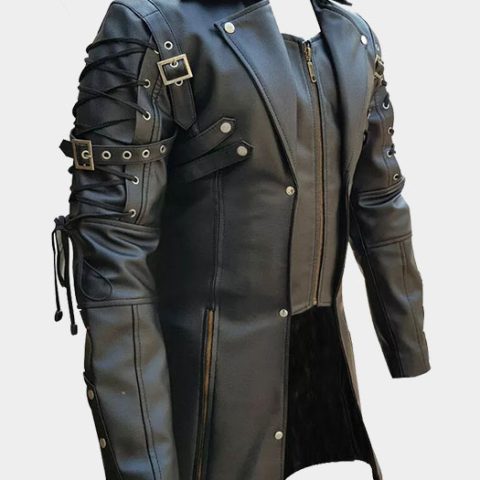Subtotal: £ 195.00
The versatility and durability of leather have cemented its status as a fundamental material within various sectors of the manufacturing industry. From fashion to automotive production, the unique properties of leather make it an invaluable resource that combines aesthetic appeal with functionality. As the market for leather products continues to expand, understanding the different types of leather available becomes crucial for manufacturers, designers, and consumers alike.
Our post delves into the myriads of leather types ranging from full-grain and top-grain to suede and bonded leather each possessing distinct characteristics that influence their application and desirability. By examining the various types of leather, this discussion aims to illuminate their respective production processes, uses, and the factors driving their selection in modern manufacturing, ultimately highlighting the inherent value they offer across diverse industries.
Overview of leather’s significance in the manufacturing industry
Leather has long held a prominent position in the manufacturing industry, serving as a vital material for a diverse array of products, including apparel, accessories, and automotive interiors. Its durability, flexibility, and aesthetic appeal make it a preferred choice for manufacturers seeking to balance quality with functionality. The significance of leather extends beyond its physical properties; it is also deeply intertwined with cultural and economic factors, influencing design trends and consumer behavior globally.
As industries continue to innovate, leather remains a cornerstone material, adapting to meet contemporary demands, including sustainable production practices. The multifaceted applications of various leather types, such as full grain and top grain, illustrate its versatility, thereby cementing its importance in sectors ranging from fashion to furniture manufacturing. Understanding leather’s role enables insights into the broader implications of its use within the manufacturing landscape, highlighting its enduring relevance in a rapidly evolving market.
Types of Leather
The manufacturing industry utilizes various types of leather, each distinguished by its origin, treatment, and intended application, resulting in significant functional and aesthetic diversity. For instance, full grain leather, derived from the top layer of animal hides, maintains its natural surface texture and is prized for its durability and breathability, making it ideal for high-end products such as luxury handbags and footwear. Conversely, corrected grain leather undergoes a more intensive processing and finishing, which results in a uniform appearance while sacrificing some breathability and suppleness. This leather is often used in mass-produced goods due to its cost effectiveness. Furthermore
Eco-friendly alternatives, such as vegetable tanned leather, highlight the industry’s growing responsibility toward sustainability. As environmental concerns rise, innovations in leather production, such as bio-based leather derived from plant materials, have emerged, demonstrating the industry’s adaptability to both consumer preferences and ecological considerations.
Distinction between genuine leather and synthetic leather
The distinction between genuine leather and synthetic leather plays a crucial role in the manufacturing industry, impacting both consumer choices and environmental considerations. Genuine leather, derived from animal hides, is celebrated for its durability, natural aesthetic, and unique aging properties. However, it often raises ethical concerns related to animal welfare and environmental degradation caused by traditional tanning processes, particularly the use of toxic chemicals, as noted in recent analyses of leather production methods.
In contrast synthetic leather made from plastic polymers offers a more environmentally friendly alternative, appealing to eco-conscious consumers. This material mimics the look and feel of genuine leather while potentially avoiding many ethical pitfalls linked to animal derived products, as discussed in industry reports on sustainable practices. Nonetheless, the durability and long-term performance of synthetic options remain topics of ongoing debate, as they may not match the resilience of genuine leather over time.
Common Uses of Leather in Manufacturing
Leather, a versatile material derived from animal hides, finds widespread application across various manufacturing sectors, showcasing its durability and aesthetic appeal. Among its most common uses is in the production of high-quality footwear, where leathers resilience contributes to both comfort and longevity. Additionally, the automotive industry leverages leather for upholstery, imparting a sense of luxury to vehicles while enhancing their market value.
In fashion and accessories, leather goods, such as bags and belts, symbolize style and sophistication, their production often involves specialized techniques that enhance both functionality and design. Moreover, leather is utilized in furniture manufacturing, where it provides an opulent finish that also withstands daily wear and tear. These applications reveal the significant role leather plays in crafting durable and attractive products, underscoring its relevance in the broader manufacturing landscape. Each of these uses highlights the unique properties of different types of leather employed in the industry.
Applications of leather in fashion and automotive industries
The versatility of leather has cemented its status as a vital material in both the fashion and automotive industries. In fashion, it is prized not only for its aesthetic appeal but also for its durability, lending sophistication to products ranging from high-end handbags to stylish footwear. As highlighted by recent studies, approximately 8 million tons of raw hides are processed annually, demonstrating the scale at which leather is utilized and its potential for sustainable use, as it repurposes waste from the food industry that would otherwise contribute to landfill pollution. In the automotive sector, leather serves as a premium interior material, enhancing the sensory experience of vehicle interiors; its integration is guided by innovative development practices aimed at improving both design and sustainability standards. Ultimately, the applications of leather across these industries underscore its enduring relevance and adaptability, captured through continuous innovation and environmental considerations.
Conclusion
In conclusion, the exploration of various types of leather utilized in the manufacturing industry reveals a dynamic relationship between materiality, sustainability, and innovation. The aging tradition of animal leather continues to coexist with emerging alternatives, such as biofabricated materials derived from fungi, which present promising avenues for sustainable manufacturing. As the demand for ethical sourcing increases, manufacturers are compelled to reassess their choices, weighing the environmental impacts and technological advancements associated with these materials. Furthermore, the influence of agglomeration economies suggests that geographic concentration can enhance the competitive advantages of firms producing diverse leather types, ultimately shaping industry practices. Therefore, the future of leather production must embrace a multifaceted approach that balances heritage craftsmanship with ecological responsibility, ensuring that the sector not only thrives economically but also contributes positively to environmental stewardship.
Summary of the importance of understanding different types of leather in manufacturing
The significance of comprehending the various types of leather in the manufacturing industry cannot be overstated, as this knowledge directly influences product quality, durability, and aesthetic appeal. Different types of leather, such as full-grain, top-grain, and suede, offer distinct properties and characteristics suitable for diverse applications, from luxury goods to industrial products. Understanding these differences aids manufacturers in making informed decisions regarding material selection, ensuring that the final products meet both functional and consumer expectations. Furthermore, such insight fosters innovation, enabling manufacturers to explore new designs and techniques that leverage the unique attributes of each leather type. Additionally, awareness of leather sourcing and sustainability practices is critical in today’s environmentally conscious market, allowing businesses to align their operations with ethical standards. Ultimately, a thorough understanding of leather types not only enhances competitive advantage but also contributes to a more responsible manufacturing process.




 Gothic Style Matrix Steampunk Trench Coat for Men - Black
Gothic Style Matrix Steampunk Trench Coat for Men - Black 